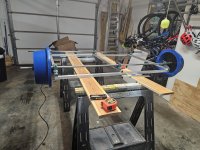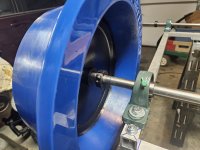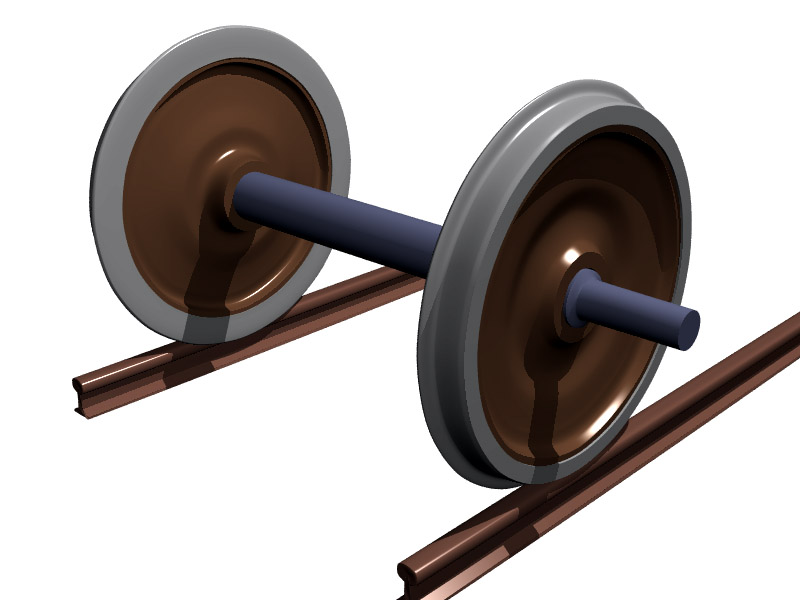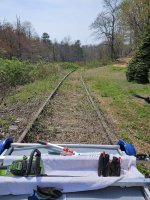Thanks, I did search before posting my question in the most relevant sub-forum/thread/etc but didn't really see any info. I did go out and measure abandoned tracks near me and the inside rail to rail measurement of 56 1/2 inches was pretty consistent, so I will probably give my flanges about an inch clearance on the rails. I couldn't find any rail cars to measure their wheel dimensions. The top of the rails (the rail head) was 3 inches wide so hoping my rear tire rides okay in the middle of it.
KH
Hello, fellow railbike builder.
This is only from my experience. I do not know if it is relevant to your build.
I, too, measure the inner distance of the rails. What I found is, the distance changes from one place another. Widest is 56 5/8" to
narrowest 56 1/4".
Looking at your photo of the track, your track is much better shape than ours. Anyway, I set mine at 56 1/4" but your wheels are different from mine. My side wheels are slightly toe-in by 1/8". That is, the distance between the leading edges is 56" and trailing edges is 56 1/4". Another difference is the material. Mine are harden steel( cogs) yours are poly. Inevitably, the wheels wonder side to side, no matter what you do. Will make a contact( hit) the side of the rail. Larger the gap, more the impact.
So, I would say, to set the distance at 56" and test it on the track at slow speed to see how it goes. Gradually increase the speed. Tweak it as you go. I set my top speed at 20mph. That is fast enough for me. I would watch the wear and tear of the flange carefully because the inner side of the rail is very rough. I found few metal flakes stuck on my side wheel that would cut a chunk off your flanges.
Another things you might want to watch are road crossings. Off course you have to watch out for the traffic but the gap between the rail and pavement might have been filled up with dirt, sometime hard packed. That's where your flanges pass through. Your choice is either clean the gaps before you make a cross or get off the bike and push it across. That's where the derailment happens the most.
One more thing. If you plan to sit on the bicycle to ride the cart, I won't recommend it unless you have another passenger to sit on the other side or in the middle, because of weight distribution. Railbike is very light by nature, flanged wheels need certain amount of weight to stay on the rail.
I am looking forward to see you riding your build. Keep on posting.









